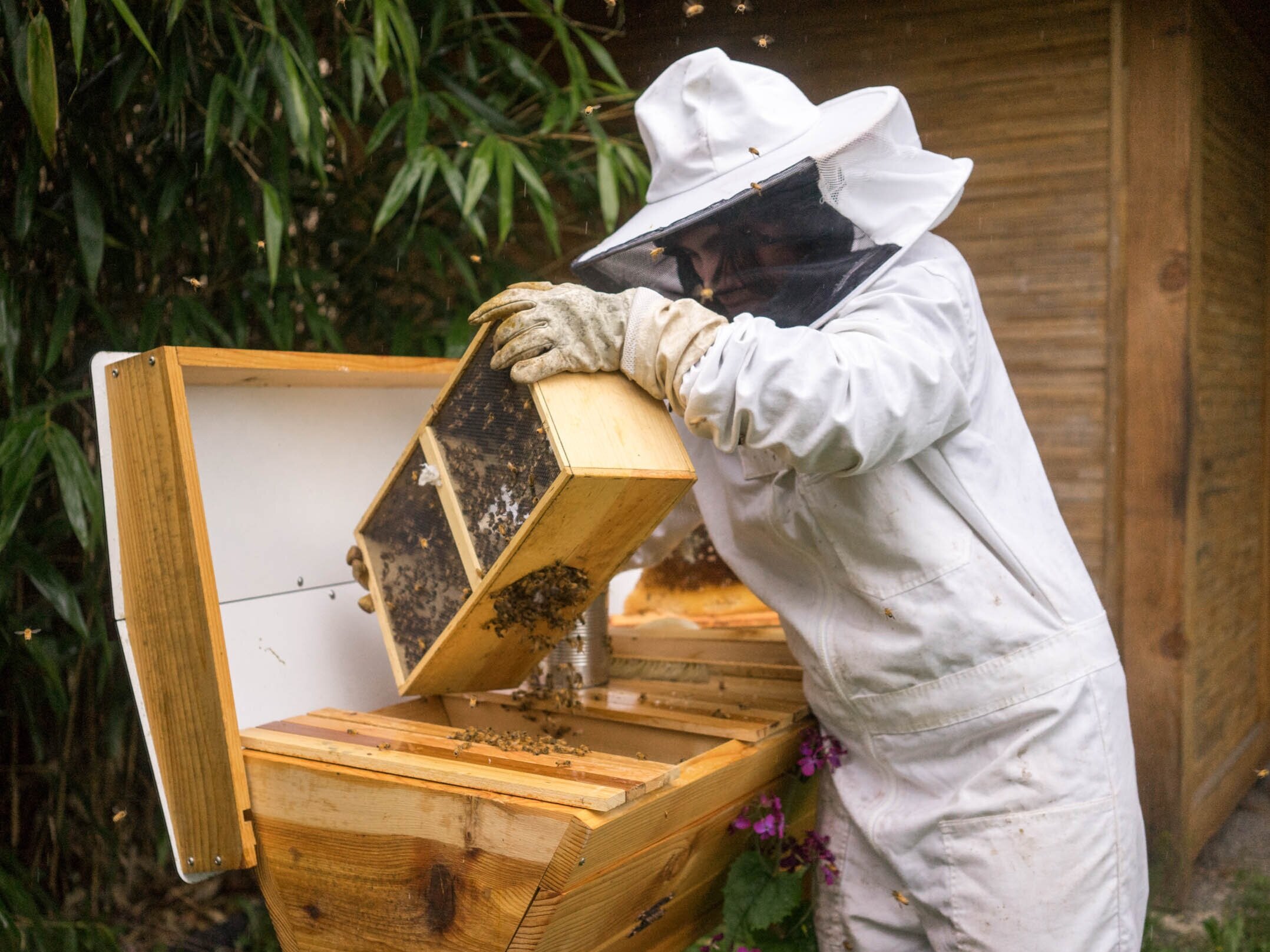Nucs have long predominated as the most popular way to get bees among hobbyists for their ease of installation and quick build-up. Since you are adding frames of brood and food upon installation, it is true that nucs provide a head start on the season. There are, however, some downsides to introducing brood into your hive right off the bat.
The Downside of Nucs
If you are a first-time beekeeper, evaluating a nuc upon installation can be confusing. Evaluating nuc quality is a practiced skill, and you’ll need to make sure your hive is queen right and of a quality that won’t shoot you in the foot later in the season (healthy brood pattern, decent population, no signs of mite activity, etc.). It is significantly easier to evaluate the quality of a bee package; a caged queen is easy to locate to make sure she is alive and well, and the weight/number of workers in the package is a much simpler signifier of quality.
More importantly, it is an unfortunate reality that we are now beekeeping in the age of varroa mites. These sneaky little parasites will be concealed (and actively reproducing) within brood cells. And yes, if you’re getting a nuc from a large-scale bee producer, it will have a measurable mite population present. On top of that, treating mites in their reproductive phase is a major challenge in the early spring (especially here in the PNW), as it needs to be warmer to use treatments that are effective at killing mites in their reproductive phase.
The Upside of Packages
These days, we exclusively use packages to stock our apiary! We’ve noticed that starting our hives with a blank mite slate makes a massive difference in our new colonies’ success rates. Since a package is just a box of loose bees with a caged queen, there are no breeding mites concealed within brood cells (or any other brood diseases, contaminated wax, or plastic frames for that matter). That doesn’t mean there are no mites present in packages, though! Phoretic mites will be hitchhiking on the bodies of the bees too (sneakily concealed between segments on the undersides of their abdomens). But, phoretic mites are so much easier to treat.
We treat all of our packages with oxalic acid (OA) vapor prior to installation. You can do this yourself if you have a vaporizer or access to renting one from a beekeeping club, and all of the required protective gear (DO NOT SKIMP ON THIS!). Otherwise, many package producers do offer this treatment before pick-up, so you don’t have to worry about doing it yourself.
Free and clear of mites from the beginning, your pest management pressures will be greatly relieved through the spring and early summer, and you won’t need to think about testing and treatments again until mid-June.
Parasite and disease-free, your bee packages will be ready to take off, especially if you already have comb from previous hives in there for them to use! If not, you can give them some liquid encouragement to get building faster. Continuously feed 1:1 sugar syrup until they no longer take it... heck, even if you do already have some comb to work with, feeding new packages isn’t a bad idea!
TL;DR
In the age of varroa mites, we recommend bee packages over nucs because they are easier to evaluate for beginners, and they can alleviate varroa mite pressures which is the leading cause of colony death among hobbyist hives today. An added bonus - they’re often less expensive!
Are you installing a bee package this spring? Learn more about early spring care of newly installed colonies HERE.
